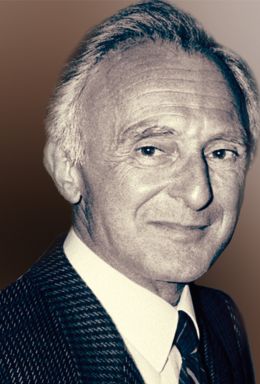
The National Institutes of Health, commonly referred to as NIH, is the primary agency of the United States government responsible for biomedical and public health research. It was founded in the late 1880s and is now part of the United States Department of Health and Human Services. Many NIH facilities are located in Bethesda, Maryland, and other nearby suburbs of the Washington metropolitan area, with other primary facilities in the Research Triangle Park in North Carolina and smaller satellite facilities located around the United States. The NIH conducts its own scientific research through the NIH Intramural Research Program (IRP) and provides major biomedical research funding to non-NIH research facilities through its Extramural Research Program.

Vinyl chloride is an organochloride with the formula H2C=CHCl. It is also called vinyl chloride monomer (VCM) or chloroethene. This colorless compound is an important industrial chemical chiefly used to produce the polymer, poly(vinyl chloride) (PVC). Vinyl chloride monomer is among the top twenty largest petrochemicals (petroleum-derived chemicals) in world production. The United States remains the largest vinyl chloride manufacturing region because of its low-production-cost position in chlorine and ethylene raw materials. China is also a large manufacturer and one of the largest consumers of vinyl chloride. Vinyl chloride is a flammable gas that has a sweet odor and is carcinogenic. It can be formed in the environment when soil organisms break down chlorinated solvents. Vinyl chloride that is released by industries or formed by the breakdown of other chlorinated chemicals can enter the air and drinking water supplies. Vinyl chloride is a common contaminant found near landfills. Before the 1970s, vinyl chloride was used as an aerosol propellant and refrigerant.

Environmental health is the branch of public health concerned with all aspects of the natural and built environment affecting human health. In order to effectively control factors that may affect health, the requirements that must be met in order to create a healthy environment must be determined. The major sub-disciplines of environmental health are environmental science, toxicology, environmental epidemiology, and environmental and occupational medicine.

Endocrine disruptors, sometimes also referred to as hormonally active agents, endocrine disrupting chemicals, or endocrine disrupting compounds are chemicals that can interfere with endocrine systems. These disruptions can cause numerous adverse human health outcomes including, alterations in sperm quality and fertility, abnormalities in sex organs, endometriosis, early puberty, altered nervous system function, immune function, certain cancers, respiratory problems, metabolic issues, diabetes, obesity, cardiovascular problems, growth, neurological and learning disabilities, and more. Found in many household and industrial products, endocrine disruptors "interfere with the synthesis, secretion, transport, binding, action, or elimination of natural hormones in the body that are responsible for development, behavior, fertility, and maintenance of homeostasis ."
An environmental factor, ecological factor or eco factor is any factor, abiotic or biotic, that influences living organisms. Abiotic factors include ambient temperature, amount of sunlight, air, soil, water and pH of the water soil in which an organism lives. Biotic factors would include the availability of food organisms and the presence of biological specificity, competitors, predators, and parasites.

Aerial application, or what is informally referred to as crop dusting, involves spraying crops with crop protection products from an agricultural aircraft. Planting certain types of seed are also included in aerial application. The specific spreading of fertilizer is also known as aerial topdressing in some countries. Many countries have severely limited aerial application of pesticides and other products because of environmental and public health hazards like spray drift; most notably, the European Union banned it outright with a few highly restricted exceptions in 2009, effectively ending the practice in all member states.

Chloroprene (IUPAC name 2-chlorobuta-1,3-diene) is a chemical compound with the molecular formula CH2=CCl−CH=CH2. Chloroprene is a colorless volatile liquid, almost exclusively used as a monomer for the production of the polymer polychloroprene, better known as neoprene, a type of synthetic rubber.

David Platt Rall was a cancer specialist and a leader in environmental health studies, whose work in environmental health helped turn it into a scientific discipline. Rall also advanced public health and prevention. He directed the National Institute of Environmental Health Sciences from 1971 to 1990, year in which he retired. His work on toxicology and carcinogenesis was recognized by his appointment as the first director of the National Toxicology Program in 1978. He held the rank of Assistant Surgeon General in the United States Public Health Service. He also chaired the World Health Organization's Program on Chemical Safety.
The National Toxicology Program (NTP) is an inter-agency program run by the United States Department of Health and Human Services to coordinate, evaluate, and report on toxicology within public agencies.
Exposure science is the study of the contact between humans and harmful agents within their environment – whether it be chemical, physical, biological, behavioural or mental stressors – with the aim of identifying the causes and preventions of the adverse health effects they result in. This can include exposure within the home, workplace, outdoors or any other environment an individual may encounter. The term 'exposure' is the umbrella term for many different types, ranging from ultraviolet exposure, exposure to the chemicals in the food we eat, to exposure to long working hours being the occupational factor most attributable to the burden of disease.
The Interagency Coordinating Committee on the Validation of Alternative Methods (ICCVAM) coordinates U.S. federal government evaluation of new, revised, and alternative test methods. Alternative methods are methods for safety testing of chemicals and chemical products that use fewer or no animals or that minimize or prevent animal pain and distress.
Paul James Lioy was a United States environmental health scientist born in Passaic, New Jersey, working in the field of exposure science. He was one of the world's leading experts in personal exposure to toxins. He published in the areas of air pollution, airborne and deposited particles, Homeland Security, and Hazardous Wastes. Lioy was a professor and division director at the Department of Environmental and Occupational Health, Rutgers University - School of Public Health. Until 30 June 2015 he was a professor and vice chair of the Department of Environmental and Occupational Medicine, Rutgers University - Robert Wood Johnson Medical School. He was deputy director of government relations and director of exposure science at the Rutgers Environmental and Occupational Health Sciences Institute in Piscataway, New Jersey.

Lorenzo (Renzo) Tomatis was an Italian physician and experimental oncologist who researched carcinogenesis and its primary prevention

Linda Silber Birnbaum is an American toxicologist, microbiologist and the former director of the National Institute for Environmental Health Sciences, as well as the National Toxicology Program, positions she held from January 18, 2009 until October 3, 2019. She also serves as an adjunct professor at the University of North Carolina at Chapel Hill School of Public Health and as a member of the editorial board of Environment International.
The National Institute of Diabetes and Digestive and Kidney Diseases (NIDDK) is part of the United States National Institutes of Health, which in turn is part of the Department of Health and Human Services. NIDDK is approximately the fifth-largest of the 27 NIH institutes. The institute's mission is to support research, training, and communication with the public in the topic areas of "diabetes and other endocrine and metabolic diseases; digestive diseases, nutritional disorders, and obesity; and kidney, urologic, and hematologic diseases". As of 2021, the Director of the institute is Griffin P. Rodgers, who assumed the position on an acting basis in 2006 and on a permanent basis in 2007.
Sarah B. Henderson is a senior environmental health scientist at the British Columbia Centre for Disease Control and a public health professor at the University of British Columbia.

Dr. Kenneth Olden is a scientist whose research revolves around diseases, such as cancers, and how chemicals and environmental factors affect them. He was director of the National Institute of Environmental Health Sciences (NIEHS) and National Toxicology Program, being the first African-American to head an National Institutes of Health (NIH) institute, a position he held from 1991 to 2005. He was also the director of the Environmental Protection Agency (EPA) and overseer of the Integrated Risk Information System (IRIS). He is a scientist who expressed that socioeconomic factors are related to cancer survival rates and need to be given more attention in scientific research. He has made multiple discoveries in the field, such as finding that the sweetener saccharin is not a chemical that causes cancer and funding research on the effects of bus exhaust on minority children in low-income housing residing in New York City. He faced controversy from multiple organizations over slow assessments during his time overseeing IRIS. He is currently 85 years old.

Darlene Dixon is an American veterinary scientist and toxicologic pathologist researching the pathogenesis/carcinogenesis of tumors affecting the reproductive tract of rodents and humans and assessing the role of environmental and endogenous hormonal factors in the growth of these tumors. She is a senior investigator at the National Institute of Environmental Health Sciences.
Gwen W. Collman is an American environmental epidemiologist. Collman is acting deputy director of the National Institute of Environmental Health Sciences and works as director of the division of extramural research and training.
Kelly K. Ferguson is an American public health researcher who is a Senior Investigator in the National Institute of Environmental Health Sciences. She leads the Perinatal and Early Life Epidemiology Group, which studies how maternal exposure to chemicals impacts pregnancy and development. In 2021, she was awarded the inaugural Lou Guillette Jr. Outstanding Young Investigator Award.



















